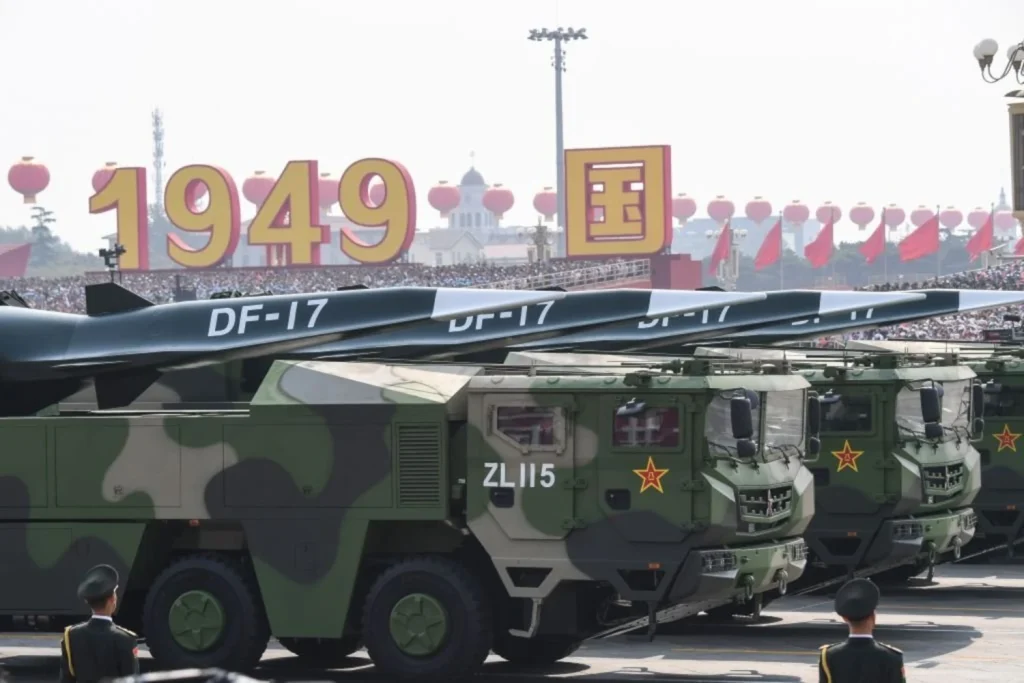Russia conducted two part non-strategic nuclear force exercises in May and June with Belarus. It means they practiced with the troops meant for handling tactical nuclear weapons. The Russian Ministry of Defense noted that they are “aimed at maintaining the readiness of personnel and equipment of units for the combat use of non-strategic nuclear weapons” of the two states to ensure their “sovereignty and territorial integrity.”
Now, NATO Secretary General Jens Stoltenberg says that the alliance is discussing the prospect of taking certain nuclear missiles from storage and placing them on alert in response to escalating threats from Russia and China. In his view, the alliance needs to send a “clear signal” to its adversaries through its nuclear arsenal. Stoltenberg stated that China is investing heavily in modern weapons, including a nuclear arsenal, which he said will grow to a thousand warheads by 2030.
Stoltenberg said he would not discuss operational details about how many nuclear warheads should be brought to readiness and how many need to be kept in reserve. This is a clear lack of transparency.
The Stockholm International Peace Research Institute (SIPRI) also highlights this in its annual assessment of global nuclear arsenals. The study notes that there is “less and less transparency” about US and Russian strategic forces, particularly since the start of the war in Ukraine. It also points out that, at the same time, “public announcements regarding nuclear-sharing agreements have become more significant.”
The primary reason for this lack of transparency is the obsolescence of the primary disarmament agreements. The United States and Russia have denounced the Intermediate-Range Nuclear Forces Treaty (INF) in recent years, and the New START (Strategic Arms Reduction Treaty), which restricted the size of these two countries’ nuclear arsenals, is in a precarious state. Moscow has suspended its participation in the treaty, citing the inability of Russian inspectors to visit American military sites due to visa requirements.
According to SIPRI, of the estimated 12,121 warheads in the global inventory as of January 2024, approximately 9585 were in military stockpiles for potential use. An estimated 3904 of those warheads were deployed with missiles and aircraft, 60 more than in January 2023. The remaining warheads were in central storage. Approximately 2100 of the deployed warheads, mostly from the US and Russia, were maintained in a state of high operational alert on ballistic missiles. For the first time, China is believed to have some warheads on high operational alert.

However, the report indicates that the quantity and variety of nuclear weapons in development are on the rise as nations increasingly depend on nuclear deterrence.
The main reason for this increase is China’s substantial strengthening of its nuclear arsenal and the strategic forces of the People’s Liberation Army (PLA) over the past five years. China was estimated to possess 290 nuclear weapons in 2019, which is nearly equivalent to France’s arsenal. In 2024, it would have 500 units, which is 90 more than in January 2023.
China was also able to deploy a limited number of nuclear warheads on missiles during peacetime for the first time. SIPRI estimated that China’s stockpile of nuclear warheads is anticipated to remain significantly smaller than that of the US and Russia, despite the possibility that it could have at least as many intercontinental ballistic missiles as Russia or the US by the end of the decade, contingent upon how it decides to organize its forces.
China’s accelerated development of its nuclear arsenal is due to the fact that nuclear disarmament agreements have never constrained it. Its deterrence doctrine is predicated on three principles: effective defense, strict sufficiency, and counterattack against the adversary’s strategic sites.
In contrast, India may be inclined to substantially augment its nuclear arsenal in response to the developments in China’s arsenal, even though Pakistan has not increased its nuclear capability in the past year. According to SIPRI, Indian forces presently possess 172 nuclear warheads, eight more than they did in January 2023.
SIPRI observed that India appears to be prioritizing the development of longer-range weapons, notably those that can reach targets throughout China, even though Pakistan remains the primary target of Indian nuclear deterrence.
India tested a variant of the Agni-V ballistic missile fitted with Multiple Independently Targetable Re-entry Vehicle (MIRV) technology in March 2024. The Agni-V has successfully brought mainland China within its striking distance, with a reported range of over 5,000 kilometers. The significance of this development in India’s strategic posture is undeniable, despite some experts disputing the precise range of the missile.
Despite the fact that both nations maintain a “no-first-use” policy regarding nuclear weapons, certain analysts have expressed concern that the advancements in missile technology could exacerbate tensions between India and China. The delicate equilibrium of regional security is at risk as the two Asian giants continue to modernize their military capabilities.
